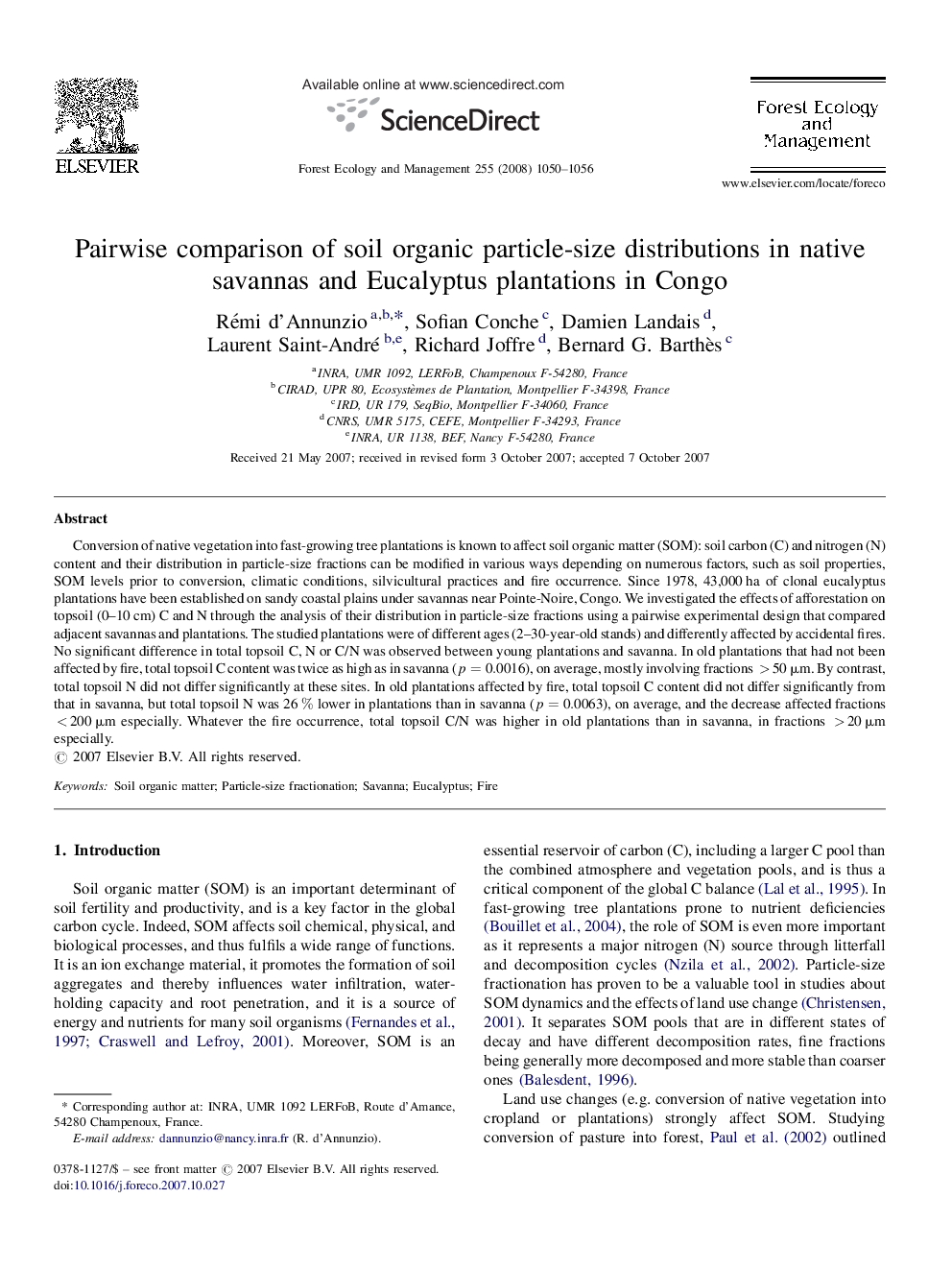| Article ID | Journal | Published Year | Pages | File Type |
|---|---|---|---|---|
| 89883 | Forest Ecology and Management | 2008 | 7 Pages |
Conversion of native vegetation into fast-growing tree plantations is known to affect soil organic matter (SOM): soil carbon (C) and nitrogen (N) content and their distribution in particle-size fractions can be modified in various ways depending on numerous factors, such as soil properties, SOM levels prior to conversion, climatic conditions, silvicultural practices and fire occurrence. Since 1978, 43,000 ha of clonal eucalyptus plantations have been established on sandy coastal plains under savannas near Pointe-Noire, Congo. We investigated the effects of afforestation on topsoil (0–10 cm) C and N through the analysis of their distribution in particle-size fractions using a pairwise experimental design that compared adjacent savannas and plantations. The studied plantations were of different ages (2–30-year-old stands) and differently affected by accidental fires. No significant difference in total topsoil C, N or C/N was observed between young plantations and savanna. In old plantations that had not been affected by fire, total topsoil C content was twice as high as in savanna (p=0.0016p=0.0016), on average, mostly involving fractions >>50 μm. By contrast, total topsoil N did not differ significantly at these sites. In old plantations affected by fire, total topsoil C content did not differ significantly from that in savanna, but total topsoil N was 26 %% lower in plantations than in savanna (p=0.0063p=0.0063), on average, and the decrease affected fractions <<200 μm especially. Whatever the fire occurrence, total topsoil C/N was higher in old plantations than in savanna, in fractions >>20 μm especially.
